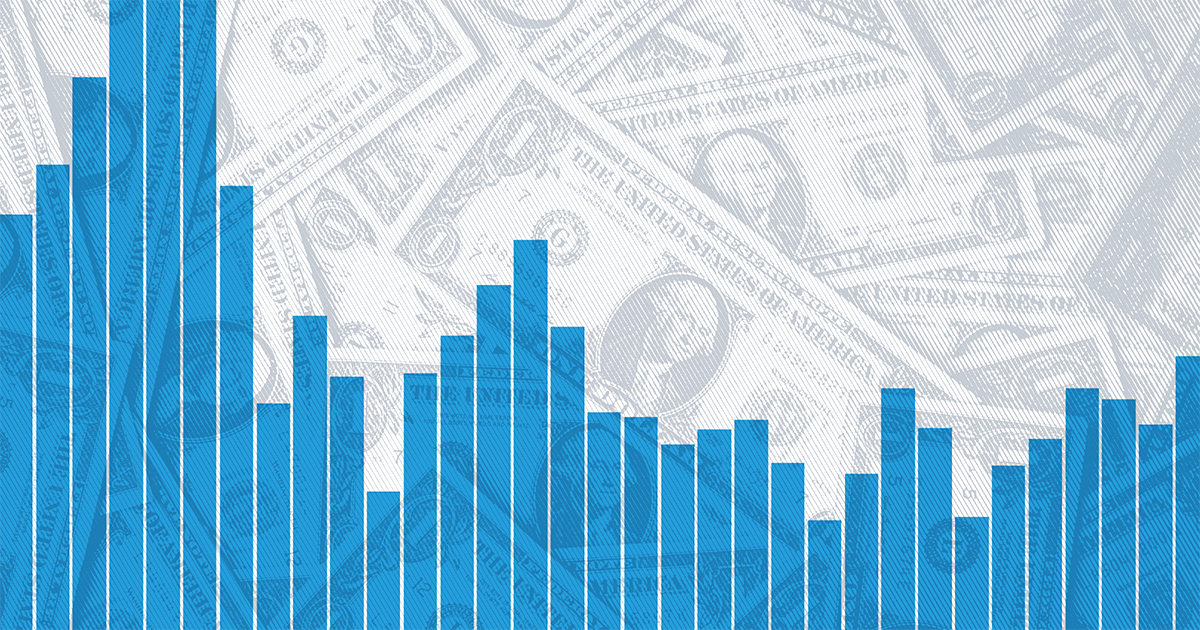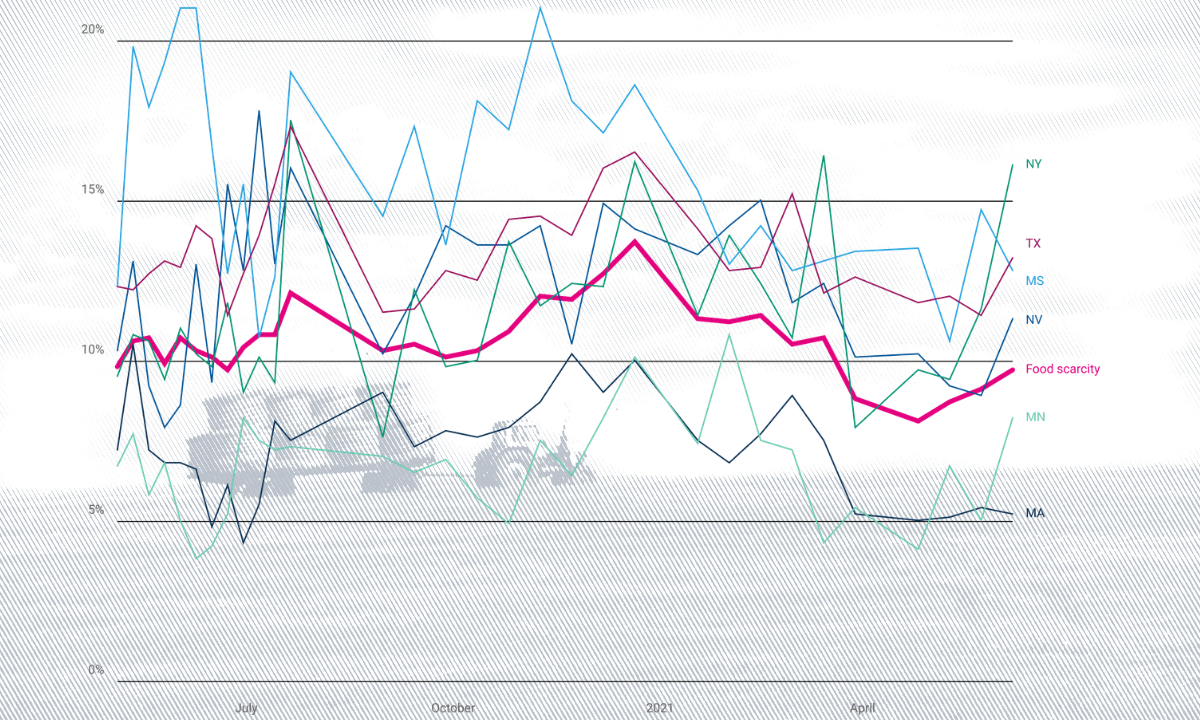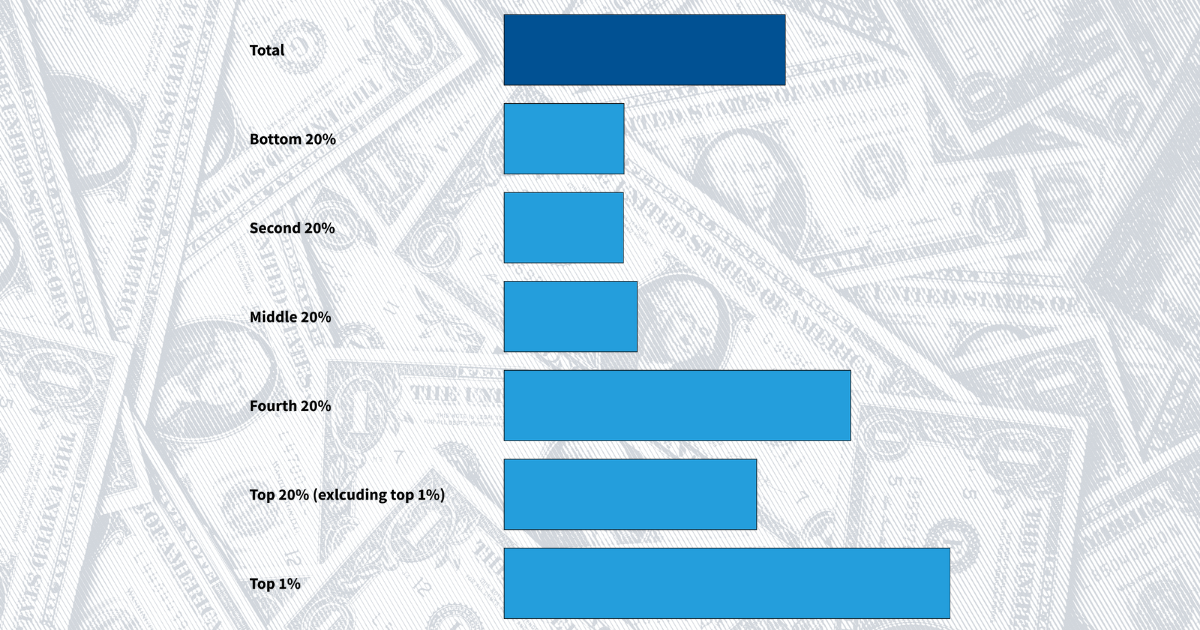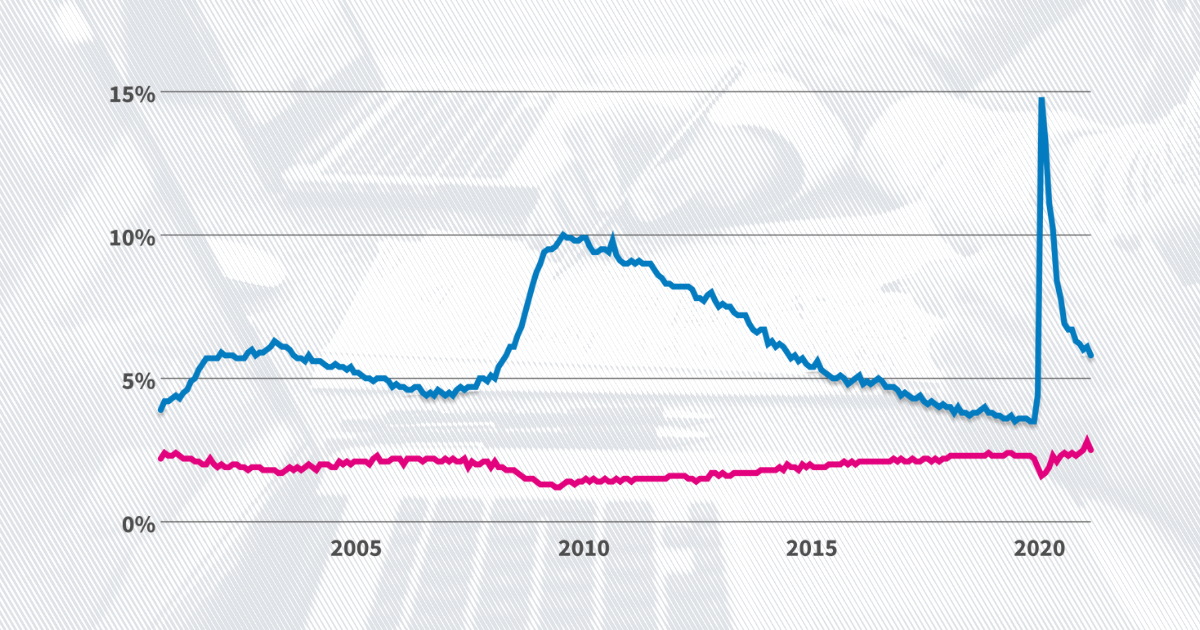Economy
American income and saving have surpassed pre-pandemic levels.

Standard of Living
Standard of Living
Adjusted for inflation, that’s $2,600 less than in 2000, with a greater proportion from retirement savings like pensions and 401(K)s.
Standard of Living
Over the same period, the wealth of the top 1% increased 379.9%, and their share of total wealth increased from 17.1% to 26.9%.
Standard of Living
The leisure and hospitality and retail trade sectors had 2021's highest quits rate, 5.5% and 4.2%, respectively.
Standard of Living
The rate fell from 27.4% to 19.5% for Black Americans and 26.5% to 17.0% for Hispanic Americans.
Standard of Living
That’s 68.6 million households. Black households were the most likely to report difficulty (42.9%) but also improved the most among racial groups, down from 54.9% in 2020.
Standard of Living
The Census Bureau defines housing insecurity as adults in households who aren’t current on rent or mortgage payments and who have slight or no confidence that they can pay next month's rent or mortgage on time.
Explore the Standard of Living Big Picture
Economy
Population
Economy
Economy
Economy
Newsletter
Keep up with the latest data and most popular content.



